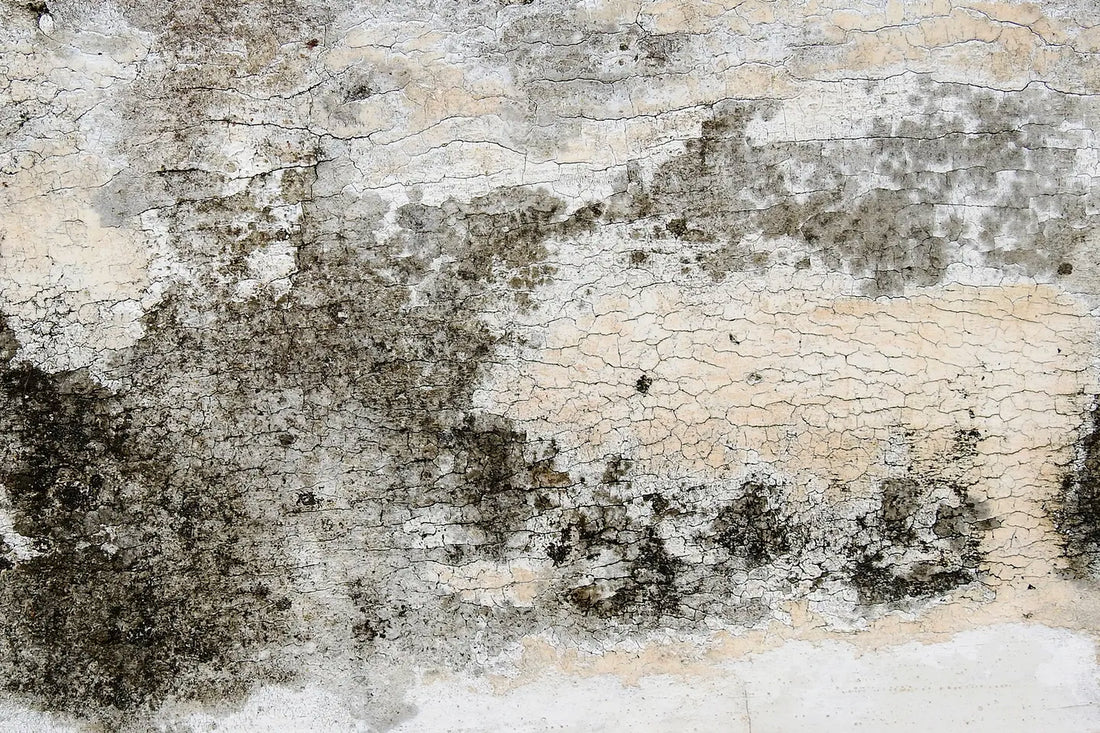
5 min read
Mold Matters: Health, Prevention and Remediation, Part 1
In Part One of this series, we explore the impacts of mold, some common types to look out for and its effect on health.
WORDS Will Higginbotham
In this three-part series, WLLW examines the issue of mold in the home. In Part One, we'll uncover the health impacts of exposure, from allergies to more severe respiratory issues. Part Two will delve into proactive measures you can take to prevent mold growth, offering practical tips and expert insights to safeguard your home environment. Finally, in Part Three we'll guide you through the crucial steps of mold remediation and provide a roadmap of tips and tricks to effectively rid your home of mold and keep it that way.
–
So what is mold? It is a type of fungus that can be found in the home, whether it is old or new. Mold is a natural part of our environment, thriving in damp, dark and humid conditions and proliferating on a range of surfaces from tile to wallboard to carpet, siding and shingles.
The main problem with mold is its potential adverse health effects on humans. It reproduces by releasing tiny spores into the air, which when inhaled can trigger a range of health problems. For many individuals, exposure can lead to mild allergic reactions such as sneezing, coughing and watery eyes. However, for those with allergies or asthma, mold can exacerbate symptoms, causing frequent and severe attacks. Moreover, certain types of mold produce mycotoxins, which are toxic substances that can be harmful when inhaled or touched. Understanding the basics of mold and its potential health impact is the first step toward creating a safer and healthier living environment for you and your family.
Types of Mold and Associated Health Risks
One of the tricky things about mold is that we might not always see it. However, it is important to note that any type of mold indoors should be addressed to prevent possible consequences for the health of inhabitants. Let's take a look at some common types:
 Stachybotrys chartarum, also known as black mold. Photo courtesy of Mold Medics |
Stachybotrys chartarum:The infamous ‘black mold’ you might have already heard about. It's dark greenish-black and usually slimy. It is known for producing mycotoxins, which can lead to serious health issues. If you've got black mold in the environment it can cause everything from respiratory and neurological problems, to fatigue and even depression. Now is an important time to look closely for black mold as the EPA and further studies have suggested that as the climate changes, mold is likely to increase in our homes. |
 Aspergillus mold found on furniture and carpeting. Photo courtesy of Mold Answers |
Aspergillus:Aspergillus comes in different colors, from green to yellow to white. Breathing in its spores can cause allergic reactions, like sneezing, a runny nose and itchy eyes. For those with weakened immune systems, however, it can be more serious, leading to lung infections and even allergic bronchopulmonary aspergillosis (ABPA). |
 Penicillium is often blue-green. Photo courtesy of Mold Answers |
Penicillium:The penicillium that gives us life-saving antibiotics can also be a pesky household mold. It's often bluish-green and can grow on materials like wallpaper, carpet and insulation. Breathing in its spores can cause allergic reactions and respiratory problems, especially for people with asthma or sensitivities. |
 Alternaria thrives in damp areas such as basements. Photo courtesy of Mold Answers |
Alternaria:This mold thrives in damp areas such as showers, sinks and basements. It's often dark green or black with a velvety texture. If you're allergic, coming into contact with Alternaria can trigger asthma symptoms like wheezing and coughing. It's also been linked to skin irritation. |
Vulnerable Populations
While mold is not good for anyone, certain groups are more susceptible than others. Babies and kids are always exploring and their developing immune systems might not be as equipped to handle mold spores, leading to more frequent and severe allergic reactions. The elderly are also at increased risk because as we age our bodies become less resilient than they once were.
Allergy sufferers are primed to be more sensitive to mold. Another group are those with pre-existing respiratory issues like asthma. Mold can trigger asthma attacks as the spores irritate the airways, making it hard to breathe. With prolonged exposure, you might develop bronchitis or other respiratory infections. It can be life-threatening for individuals with asthma or chronic obstructive pulmonary disease (COPD) or other respiratory conditions.
Signs and Symptoms of Mold Exposure
Be on the lookout for one or more of the following symptoms:
- Respiratory issues: persistent coughing, wheezing or difficulty breathing as well as chest tightness or congestion.
- Allergic reactions: sneezing, runny or stuffy nose, itchy, watery eyes, skin rashes or irritation.
- Sinus problems: sinus headaches, sinus infections (sinusitis), postnasal drip.
- Neurological symptoms: fatigue or lethargy, memory problems, difficulty concentrating.
- General malaise: persistent headaches, nausea or dizziness, feeling generally unwell without an obvious cause.
- Asthma exacerbation: increased asthma attacks or worsening of asthma symptoms.
Read more for prevention and remediation:
Mold Matters: Health, Prevention and Remediation, Part 2
Mold Matters: Health, Prevention and Remediation, Part 3
The views and opinions expressed by WLLW are for general informational purposes only and should not be construed as professional advice. Readers are encouraged to seek the guidance of certified mold remediation specialists as every circumstance is unique and proper care should be taken to address mold issues effectively and safely.
Feature Image: srckomkrits/Adobe
Photography: Mold Medics, Mold Answers


